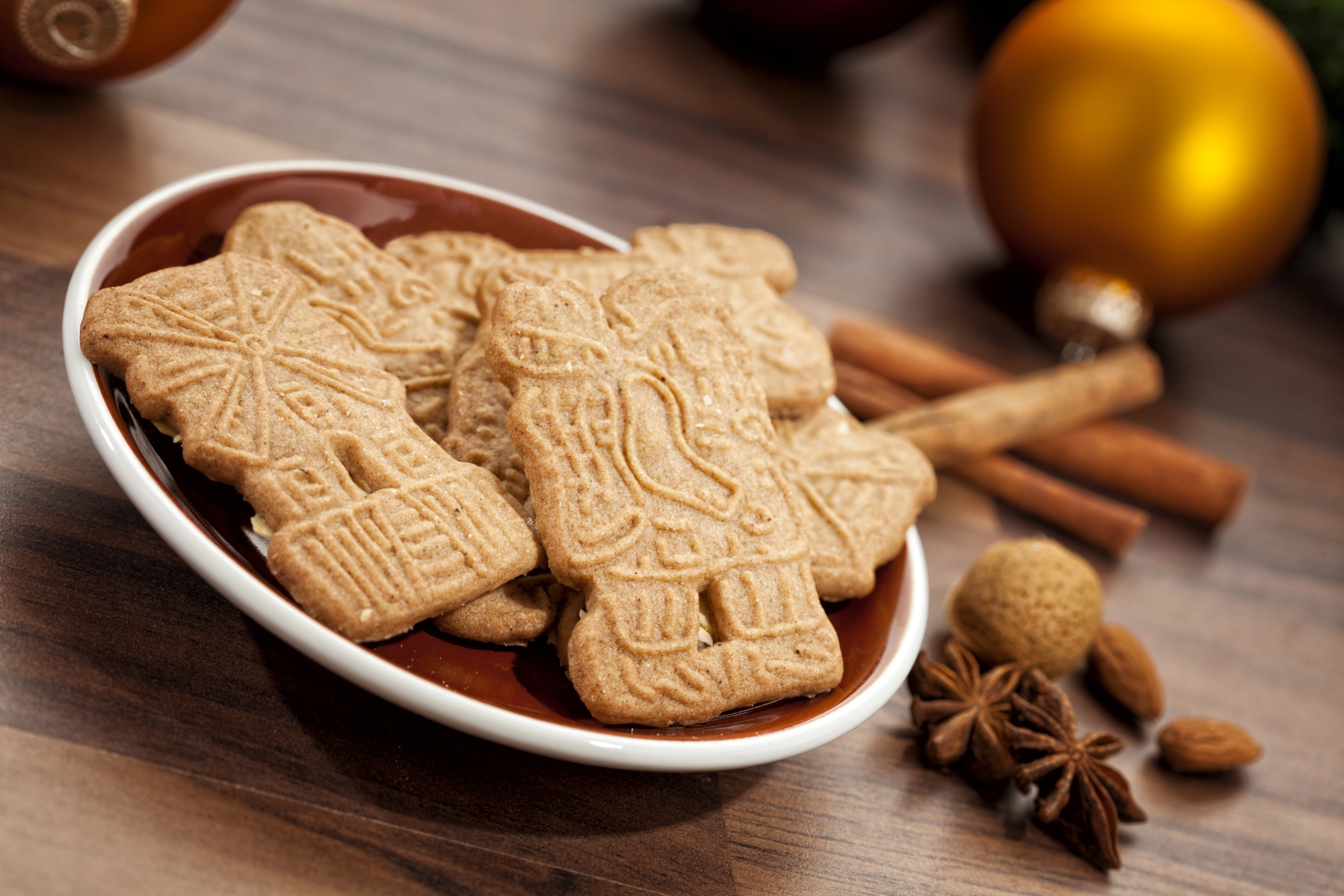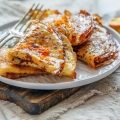The name “speculoos” might seem unfamiliar at first, but it immediately conjures a sense of tradition and a distinct, spiced flavor. These thin, crisp cookies, originally from Belgium and the Netherlands, hold a special connection to Saint Nicholas, the patron of generosity and protector of children.
With their blend of aromatic spices and caramelized sugar, speculoos have grown beyond their regional origins to become a beloved treat worldwide, enjoyed throughout the year by people of all ages.
The Historical Roots of Speculoos
The history of speculoos stretches back to the Middle Ages, when northern Europe began incorporating spices imported from Asia. Flemish merchants brought cinnamon, nutmeg, ginger, and cloves, adding warmth and fragrance to local baking traditions.
The name “speculoos” derives from the Latin speculum, or “mirror,” referring to the decorative patterns pressed into the dough. Bakers used intricately carved wooden molds to imprint designs depicting scenes from Saint Nicholas’s life or figures from Flemish folklore. These cookies, created to honor the saint on December 6, also reflected the artistic craftsmanship of their time.
Saint Nicholas and His Legacy
Known as Sinterklaas in the Netherlands, Saint Nicholas is central to northern European winter traditions. Celebrated as a figure of kindness and protection, he inspired tales of generosity, such as the story of how he secretly provided gold to save three impoverished sisters from servitude.
During Saint Nicholas Day festivities, speculoos are often given to children alongside other small treats. These cookies represent more than seasonal indulgence; they carry the spirit of sharing and care associated with the saint.
From Myra to Italy: The historical odyssey of Saint Nicholas
Speculoos in Modern Times
Once tied exclusively to Saint Nicholas celebrations, speculoos have become a staple dessert enjoyed year-round. A major milestone in their popularity was the creation of speculoos spread, a creamy paste made from ground cookies, which debuted in Belgium in 2007. It quickly gained global recognition as a versatile and delicious alternative to traditional spreads.
Speculoos are also celebrated for their adaptability in the kitchen:
- Desserts: A flavorful base for cheesecakes, tiramisu, and mousses.
- Toppings: A crunchy addition to ice cream, yogurt, or pancakes.
- Pairings: Perfect alongside tea, coffee, or hot chocolate.
Even fine-dining establishments incorporate speculoos into their menus, demonstrating their culinary versatility.
Timeless Craftsmanship and Flavor
Traditional molds for speculoos were often crafted from pearwood, a material prized for its strength and ability to capture intricate details. While regional variations exist—Belgian recipes emphasize a buttery richness, whereas Dutch versions highlight spiced flavors—their essence remains the same.
At holiday markets in Belgium and the Netherlands, artisanal speculoos remain a highlight. Bakeries in cities like Bruges and Brussels often use heirloom recipes and antique molds to produce these cookies, offering a taste of history to visitors. Culinary workshops provide an opportunity for tourists to learn the techniques behind this traditional treat.
Making Speculoos at Home
For those who wish to recreate speculoos at home, here’s a classic recipe:
Ingredients:
500 g all-purpose flour
250 g dark brown sugar
250 g softened butter
1 egg
2 tsp ground cinnamon
1 tsp ground nutmeg
½ tsp ground cloves
A pinch of salt
2 tbsp milk
Instructions:
Combine flour, sugar, spices, and salt in a large bowl.
Add butter in pieces, mixing until the dough resembles coarse crumbs.
Stir in the egg and milk, kneading until smooth.
Wrap the dough in plastic and refrigerate for at least 2 hours, preferably overnight.
Roll the dough on a floured surface and press with decorative molds.
Cut the cookies and place them on a parchment-lined baking sheet.
Bake at 180°C (350°F) for 10–15 minutes, until golden.
Allow to cool before serving.
A Celebration of Flavor and History
Speculoos embody the heritage of Flemish craftsmanship and the enduring appeal of Saint Nicholas traditions. From their intricate designs to their warm, spiced flavors, these cookies evoke the richness of European winter festivities and the simple pleasure of sharing something special.
Whether enjoyed at a bustling holiday market or made at home with care, speculoos continue to connect people to a centuries-old tradition with every bite.





